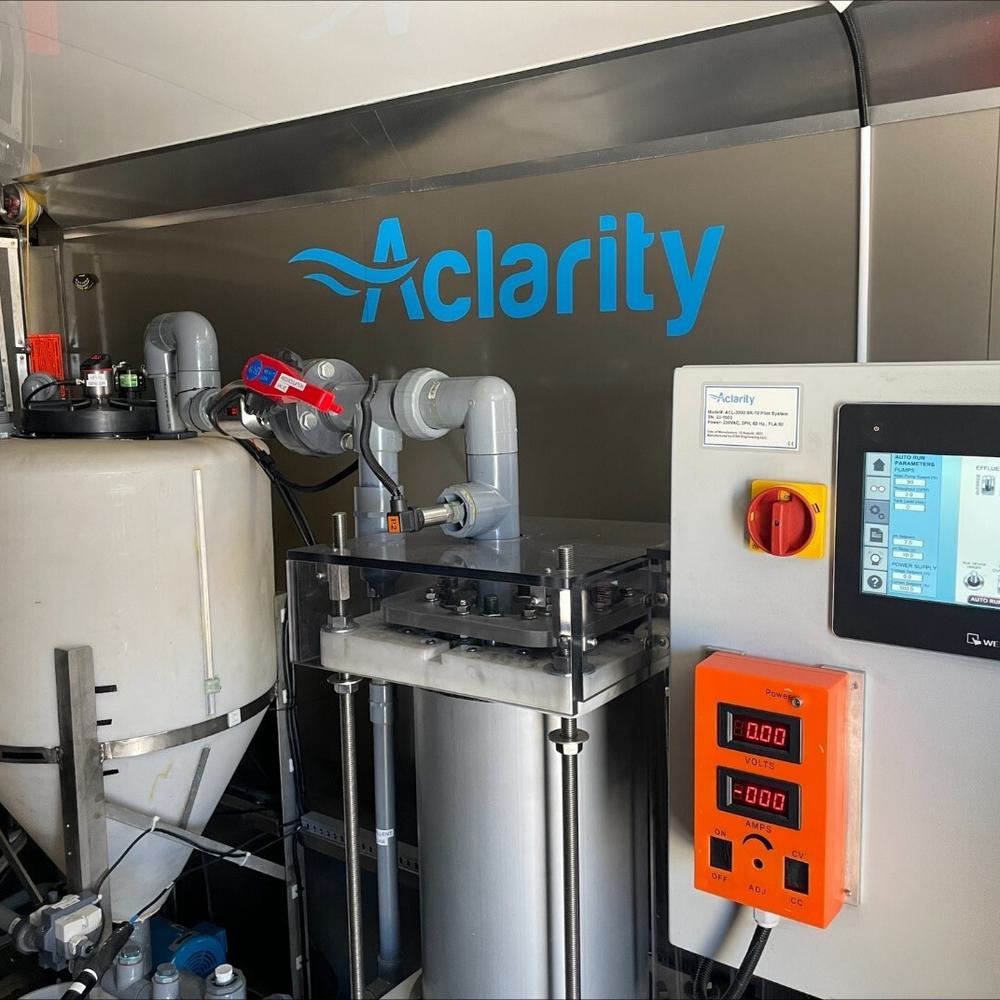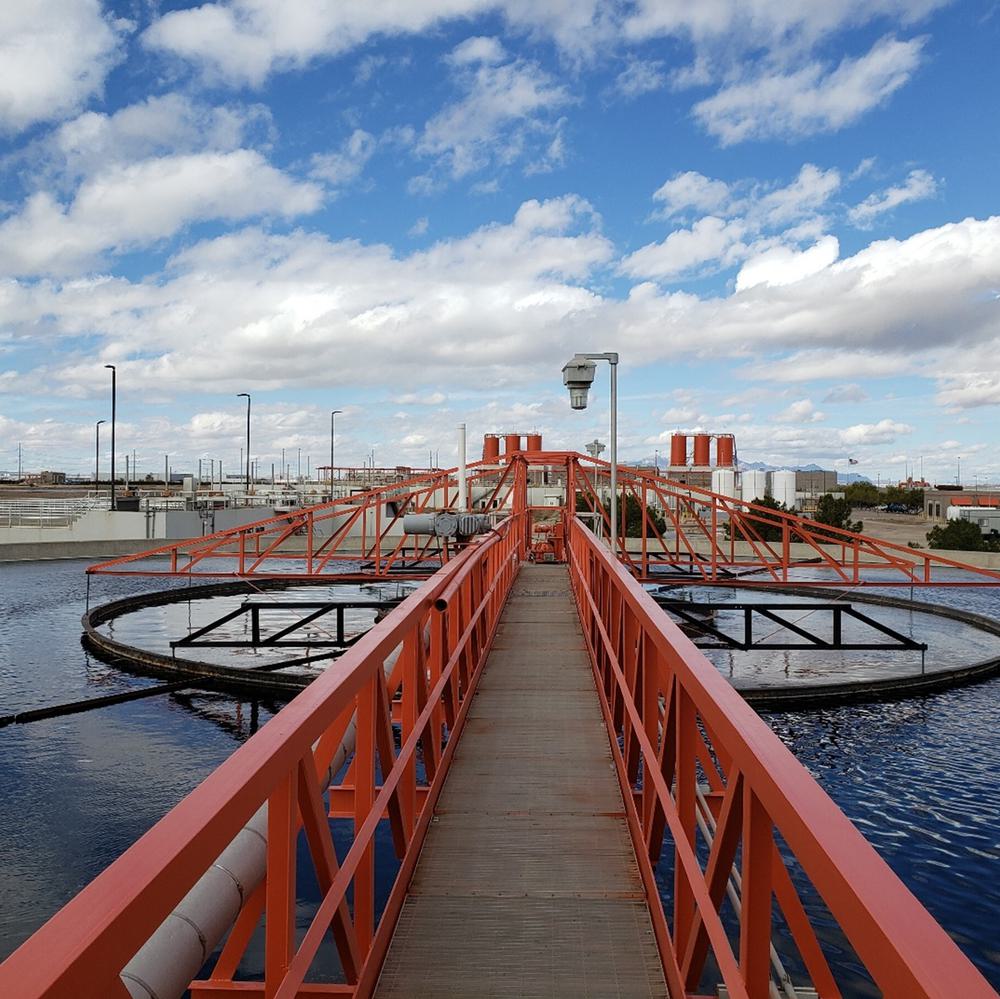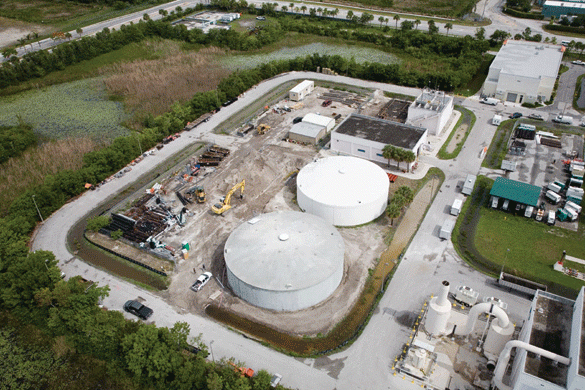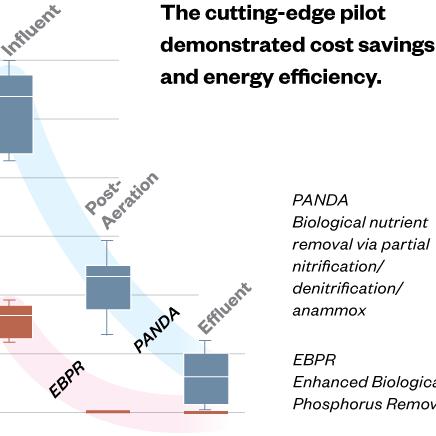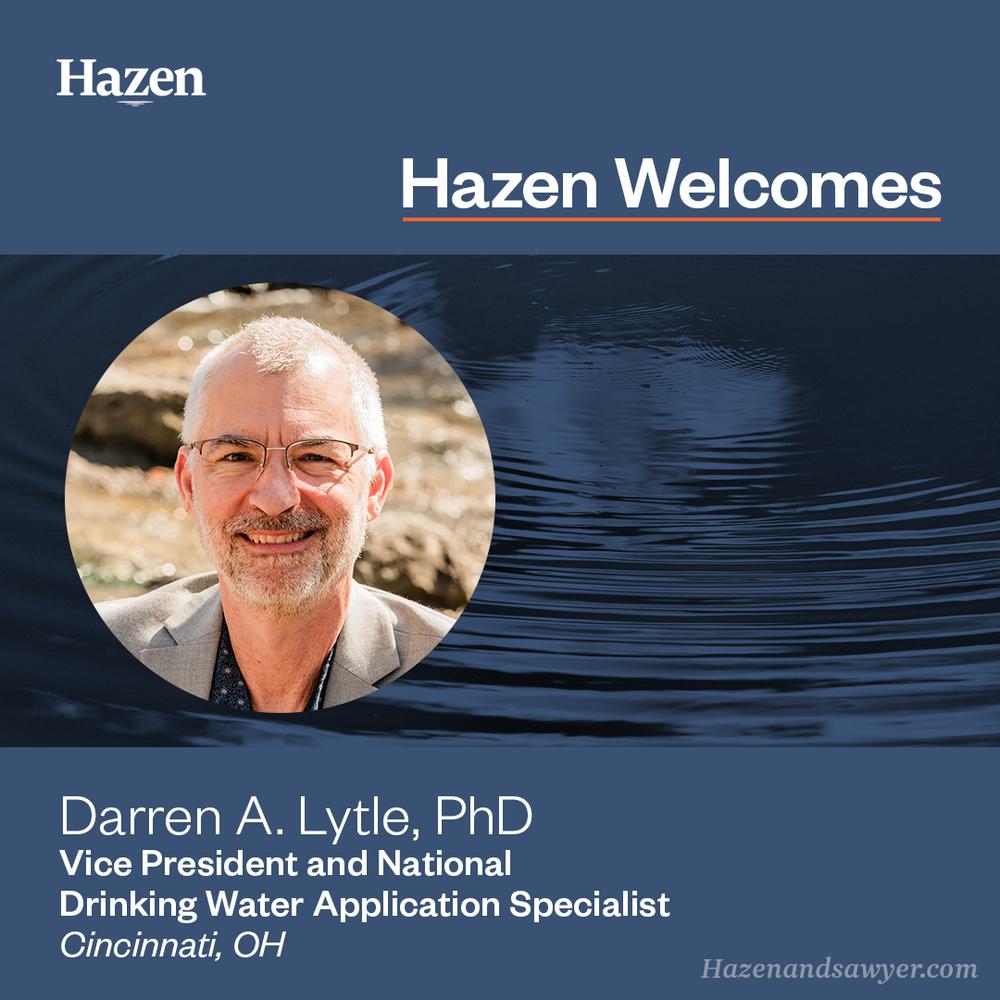Nutrient Recovery Using OSTARA with WASSTRIP and Multiform Harvest
To address struvite issues and a stringent phosphorus limit at F. Wayne Hill Water Resources Center (FWHWRC), Gwinnett County undertook a pilot program and business case evaluation to assess two potential nutrient recovery processes to treat phosphorus and ammonia while producing marketable fertilizer as a by-product.
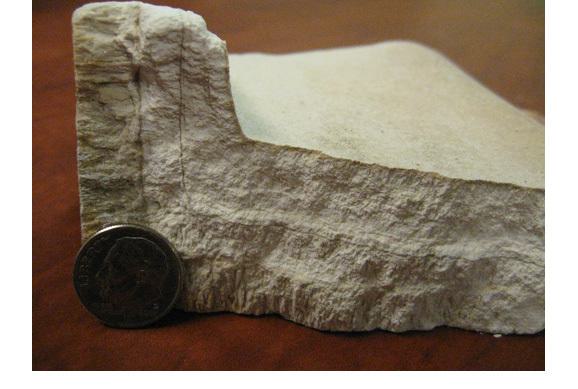
As a result of a decision to switch to Mg(OH)2 in the collection system for odor and corrosion control, struvite (NH4MgPO4•6H2O) formation in the solids handling facilities has become an operations and maintenance concern. This piece of struvite was taken from a dewatering centrifuge during cleaning.
F. Wayne Hill Water Resources Center (FWHWRC) is a 60 mgd advanced wastewater treatment facility located in Buford, GA, required to meet the low phosphorus discharge limit of 0.08 mg/L.
Precipitating struvite for use as a slow release fertilizer can help facilities meet lower phosphorus limits, while creating a new revenue stream. This additional revenue stream helps mitigate operating costs and restores a valuable resource, as the supply of readily-minable phosphorus is thought to be rapidly diminishing.
Hazen and Sawyer assisted FWHWRC with a comprehensive evaluation of potential struvite precipitation strategies, including bench and pilot scale testing, BioWin modeling, and a net present cost analysis. Ostara Nutrient Recovery Technologies Inc. (Ostara) and Multiform Harvest Inc. (Multiform) technologies were both evaluated.

Ron Latimer leads Hazen's Wastewater Process Modeling Group and specializes in biological and chemical process, nutrient removal and recovery, and chemical and energy optimization.
Related Topics:
Pilot Testing Solutions
FWHWRC is a 60-mgd advanced WWTP facility that utilizes 3 and 5-stage BNR secondary treatment and an array of tertiary treatment methods.
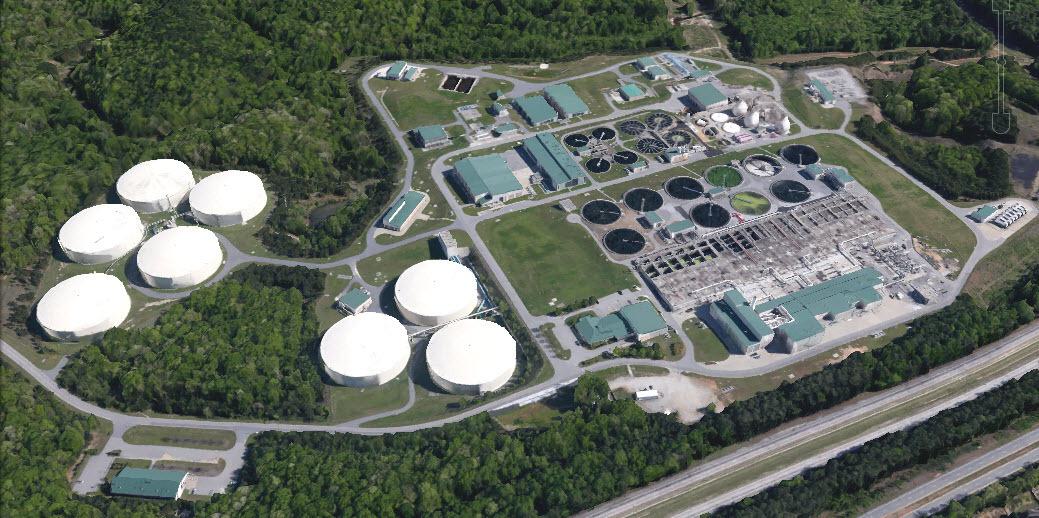
Ostara and Multiform processes typically treat dewatering centrate, however, a phosphorous release process was employed at FWHWRC that would allow for increased mass recovery of nutrients and provide better protection of solids handling equipment.
Waste Activated Sludge Stripping to Remove Internal Phosphorus (WASSTRIP) is a patented process that anaerobically reacts primary sludge (PS) with Bio-P waste activated sludge (WAS) to induce phosphorus release from phosphate accumulating microorganisms. WASSTRIP blends the filtrate from the PS and WAS mixture with dewatering centrate before reacting in the Ostara Pearl® reactor. The Multiform process uses a similar P-release technology.
The pilot scale testing showed that both technologies are capable of recovering phosphorus and ammonia as fertilizer product. Ostara achieved 76% and 35% of P and N removal respectively and Multiform achieved 74% and 21% of P and N removal respectively.
The business case evaluation assessed financial, societal, and environmental considerations to determine the most appropriate alternative for nutrient control at FWHWRC, weighing nutrient control via struvite precipitation (Ostara) against traditional ferric treatment. Both alternatives were assessed with and without continuation of Mg(OH)2 addition in the collection system.
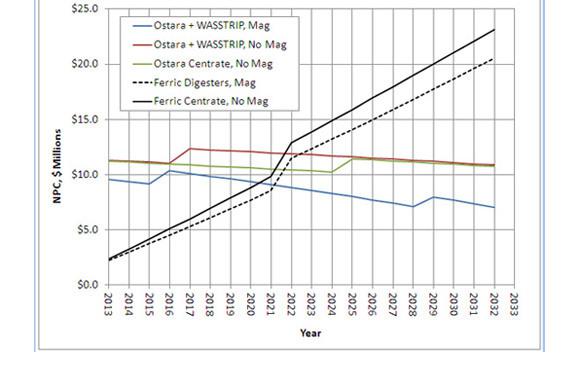
Analysis showed that nutrient control via struvite precipitation - while continuing to add of Mg(OH)2 in the collection system - was the best alternative, with a payback of just over nine years over the ferric option. Sensitivity analyses showed that although ferric cost, inflation rate, discount rate, energy cost, and fertilizer revenue had effects on the overall cost of the project, they did not affect the overall rank of the alternatives.
Project Outcomes and Benefits
- Precipitating struvite for use as a slow-release fertilizer helps meet lower phosphorus limits, while creating a new revenue stream, offsetting operating costs.
- The pilot scale testing validated two technologies capable of recovering phosphorus and ammonia as fertilizer product.
- Net present cost analysis identified the treatment option most appropriate to meet FWHWRC's nutrient limits.

